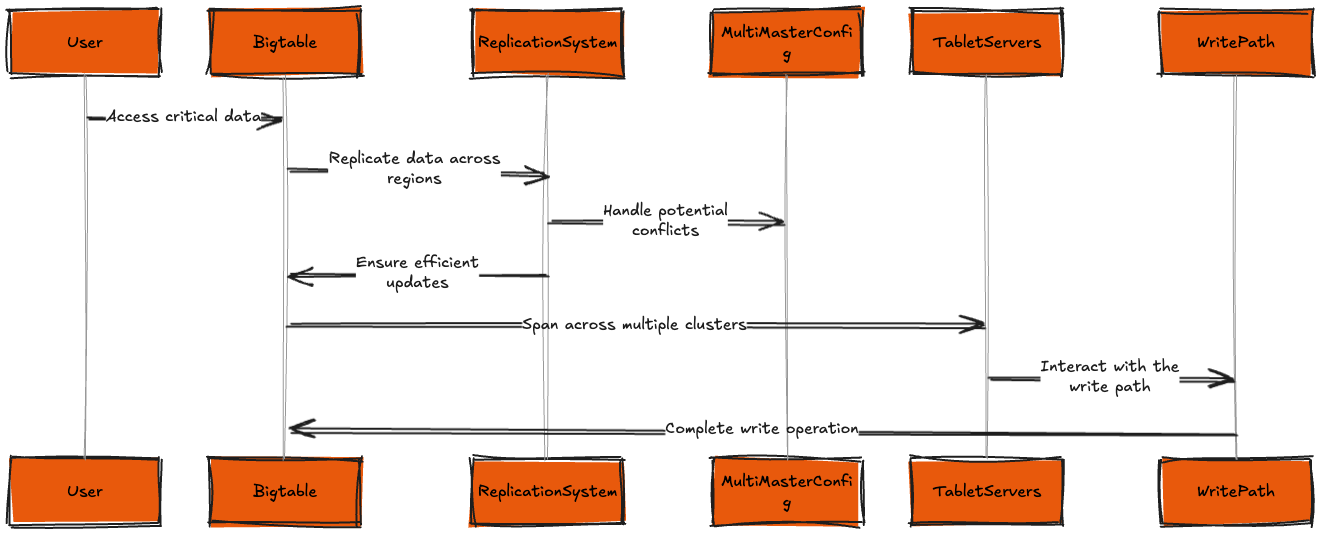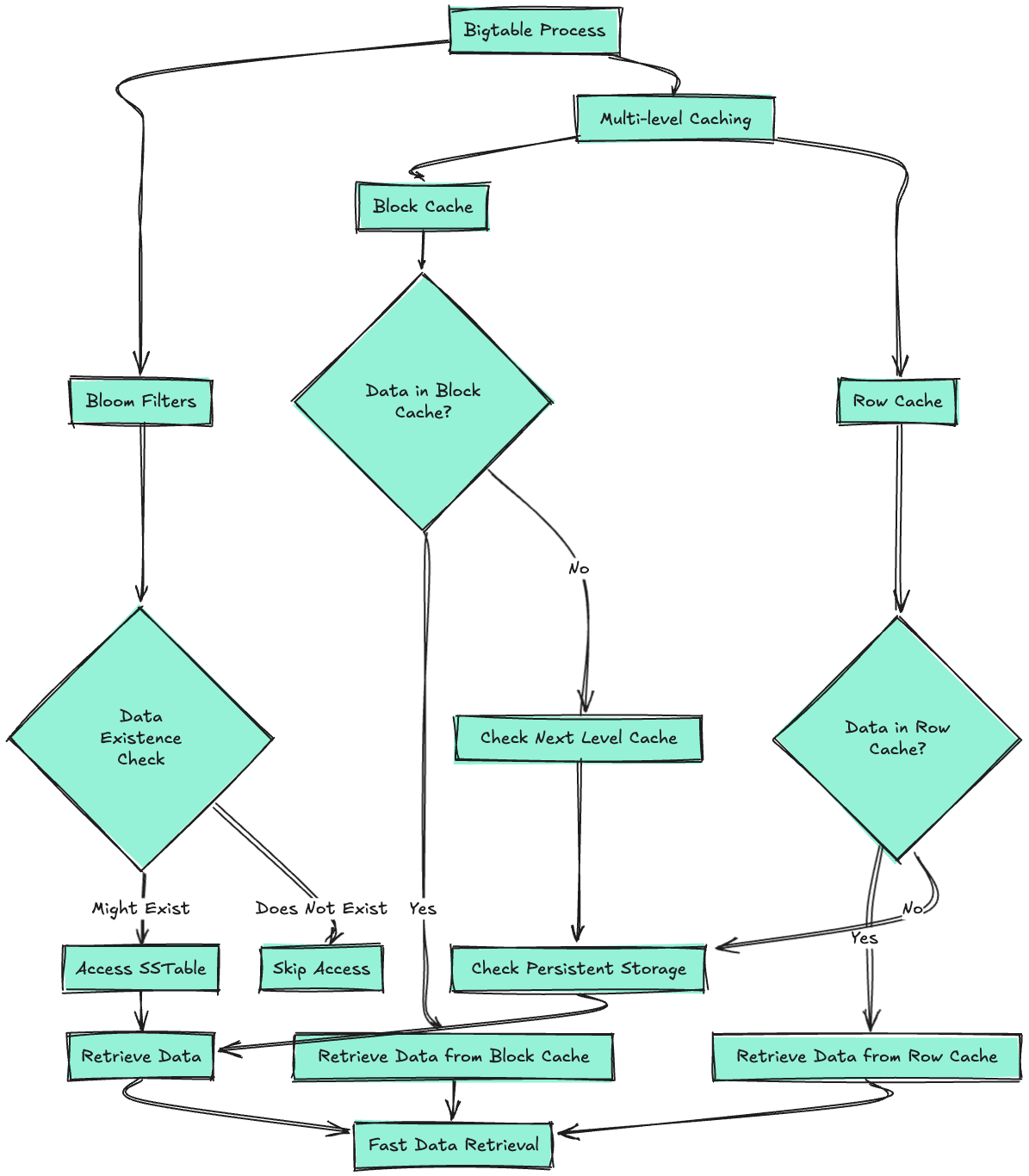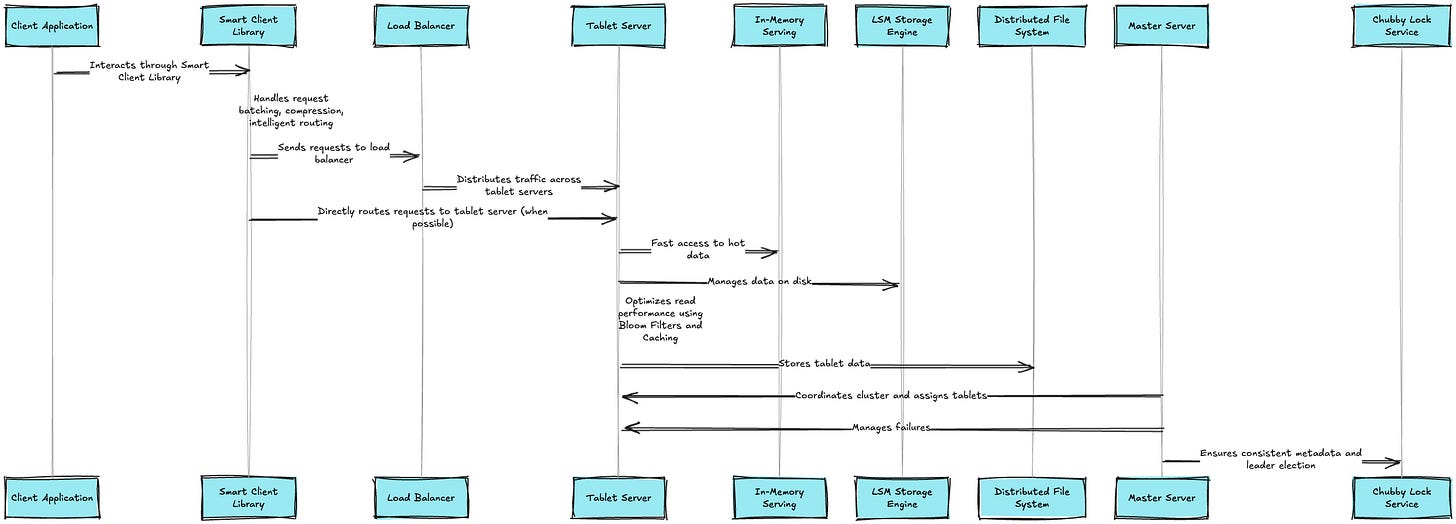[System Design Tech Case Study Pulse #28] 100 Billion Requests Daily : How Google Bigtable Actually Works
With detailed explanation and flow chart....
Hi All,
Google Bigtable's architecture enables it to serve over 100 billion requests daily, powering numerous Google services such as Search, Analytics, Maps, and Gmail. This incredible feat allows Google to provide real-time, scalable data access to billions of users worldwide.
Let's dive deep into how Google engineered this system, exploring the key architectural decisions, scaling strategies, and optimizations that enable Bigtable to handle this massive volume of daily requests.
Learn how to Design Facebook Newsfeed
System Overview
Before we delve into Bigtable's architecture, let's look at some key metrics that highlight the scale of its operations:
- Requests served daily: 100 billion+
- Peak queries per second: Millions
- Data stored: Petabytes to Exabytes
- Latency: Single-digit milliseconds for most operations
- Availability: 99.999%+
- Global deployment: Across dozens of data centers
- Concurrent users: Billions
- Table sizes: Up to hundreds of terabytes
- Columns per table: Thousands to millions
How Real World Scalable Systems are Build — 200+ System Design Case Studies:
System Design Den : Must Know System Design Case Studies
[System Design Tech Case Study Pulse #12] 8+ Billion Daily Views: How Facebook’s Live Video Ranking Algorithm Processes Daily Views Using Storm and Memcache
[System Design Tech Case Study Pulse #18] Tinder 1.5 Billion Swipes per Day : How Tinder Real Time Matching Actually Works
[System Design Tech Case Study Pulse #17] How Discord’s Real-Time Chat Scales to 200+ Million Users
[Tuesday Engineering Bytes] How Netflix handles millions of memberships efficiently?
[Friday Engineering Bytes] The Billion-Dollar Question — What’s My ETA? How Uber Calculates ETA…
[Saturday Engineering Bytes] What happens Once You Press Play button on Netflix..
[Monday Engineering Bytes] FAANG level — How to Write Production Ready Code ?
[Friday Engineering Bytes] At Amazon How 310 Million Users Experience Lightning-Fast Load Times
[Tuesday Engineering Bytes] How PayPal Manages Over 400 Million Active Accounts Seamlessly?
How it works ( in detail) —
1. Client Interaction:
- Client applications interact with Bigtable through the Smart Client Library.
- The library handles request batching, compression, and intelligent routing.
2. Request Routing:
- Requests are sent through a load balancer to distribute traffic across tablet servers.
- The Smart Client often routes requests directly to the appropriate tablet server.





